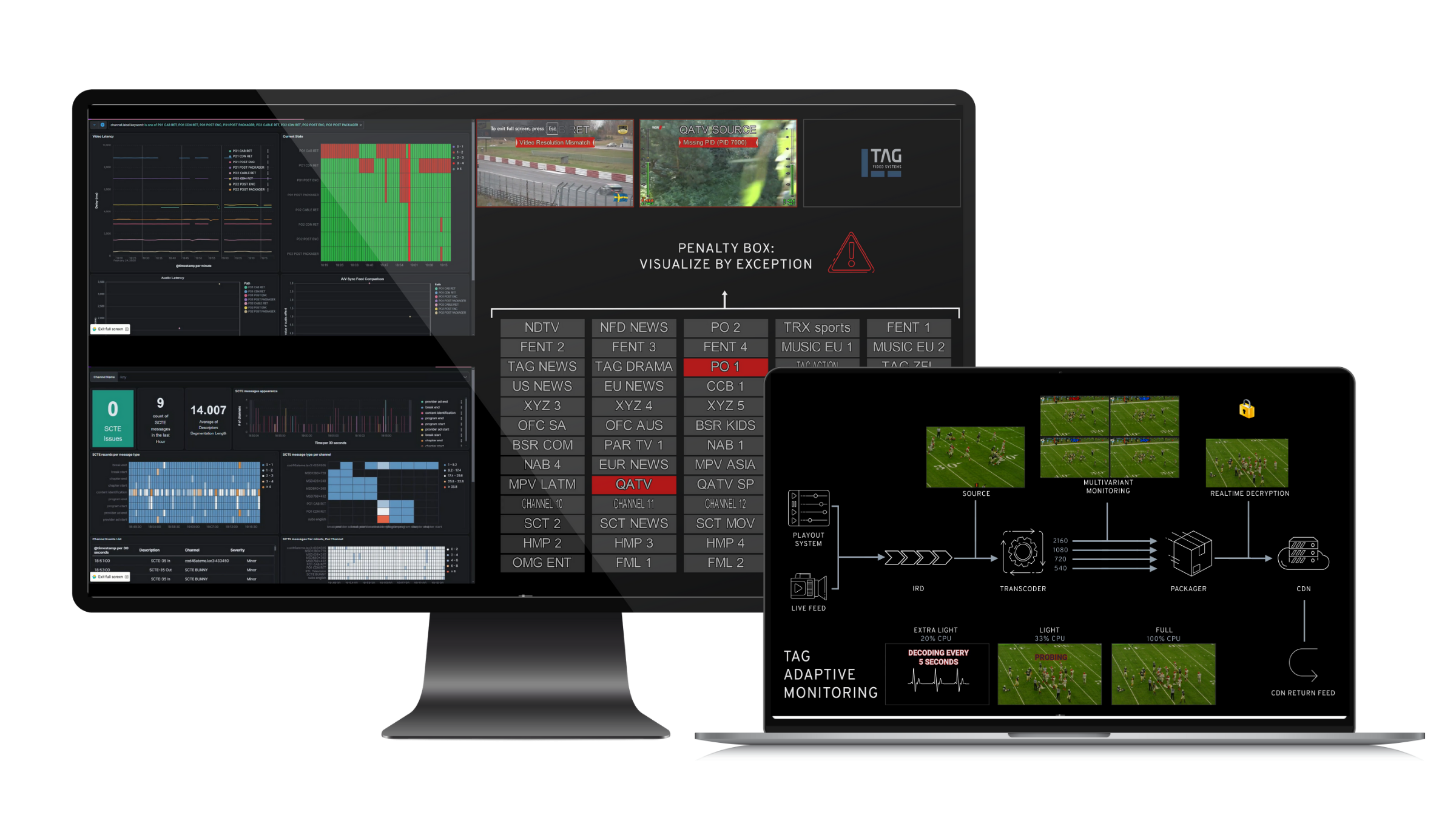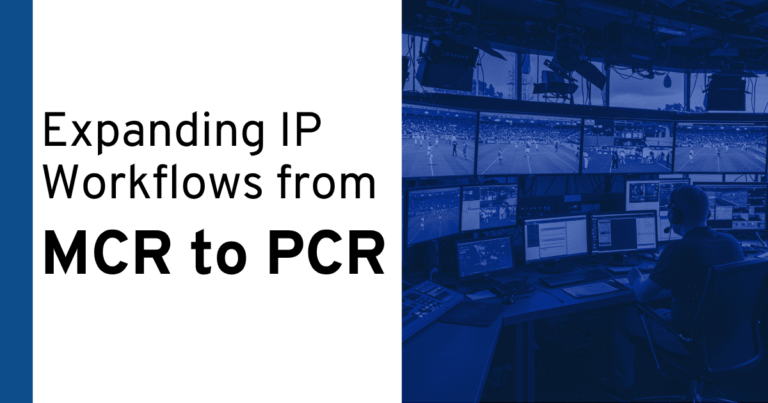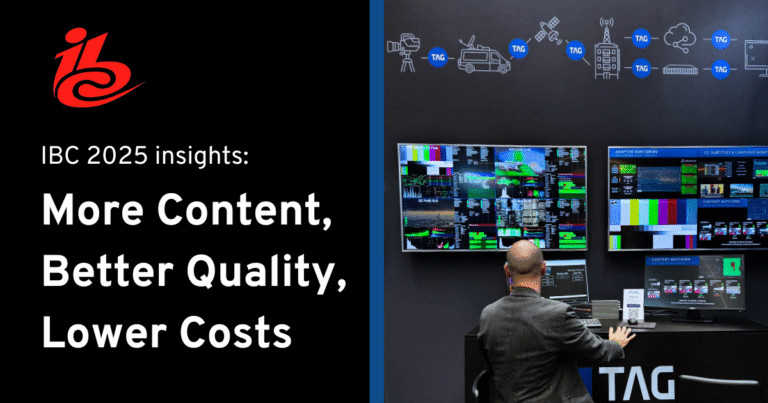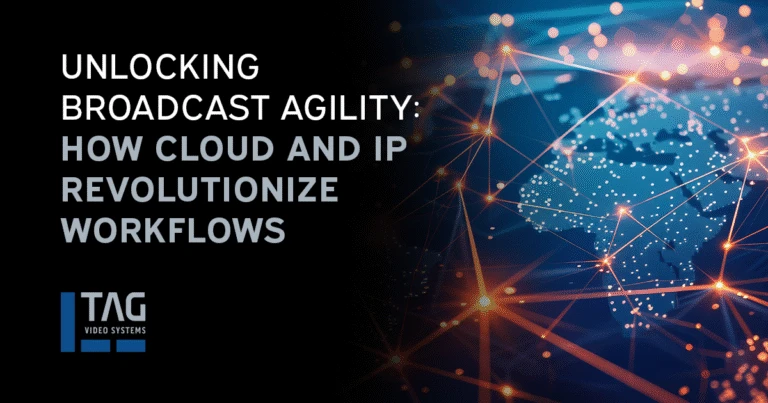The broadcast industry is navigating significant technical challenges as IP-based workflows become standard, requiring effective monitoring to maintain quality while managing complex systems and protocols. Media companies face practical challenges integrating streaming and OTT platforms alongside traditional infrastructure while viewers – with more choices than ever before – demand consistent, superior experiences.
Increased Complexity and Fragmented Systems
Content delivery diversification across OTT platforms and legacy broadcast infrastructure has significantly increased workflow complexity, creating challenges in maintaining consistent viewer experiences. Traditional workflows no longer deliver the efficiency, accuracy, or scalability needed to manage the growing volume of streams and formats.
Media organizations now navigate numerous audio, video, and data sources in a variety of formats across complex signal chains with hundreds or even thousands of data points. Modern workflows simultaneously process multiple standards (SMPTE ST 2110, JPEG-XS, H.264, HEVC) and transport protocols (SRT, NDI, HLS, MPEG-DASH), creating dual challenges of format compatibility and maintaining visibility across transport layers. Without unified monitoring, teams risk creating fragmented systems with format-specific tools, while multiple distribution channels require operators to master more than one diagnostic tool simultaneously or accept siloed operations.
Why Monitoring Matters
Within this context, tools that quantify quality of service (QoS) and quality of experience (QoE) have become more essential than ever in media operations. After all, 30 seconds of downtime, or even just five seconds in a crucial moment, could mean the loss of millions in revenue. Operations teams face mounting challenges: ensuring real-time visibility, maintaining consistent quality across diverse delivery methods, and adapting to the accelerating transition toward IP-based infrastructures.
At the same time, an ongoing trend in the broadcasting industry is doing more with less. Creating more content with fewer resources is a challenge in itself, and then adding the demand for efficient resource utilization to create cost savings only spreads teams even thinner. These trends necessitate monitoring more content with higher quality standards using fewer human resources.
Achieving true operational efficiency requires seamless monitoring of video, audio, and metadata streams across live production, playout, and delivery workflows. As workflows expand and become more complex, media organizations looking to stay ahead of the curve will embrace tools that empower teams to do more with less.
How Software-based IP Monitoring Simplifies Complex Workflows
Given the increasingly complex environment, many operation centers are moving away from dedicated, legacy hardware appliances that once defined broadcast infrastructure. Scanning the horizon, the solution comes in the form of software-centric IP-native platforms that offer an adaptive approach to monitoring. Tools known for keeping up with the rapid pace of change and offering scalability, automation, and innovation lead the charge from traditional, hardware-dependent setups toward modern, agile systems.
Their capabilities help engineering and operations teams identify and resolve issues faster while managing more content streams, thanks to:
- Unified visualization: Monitoring a wide range of standards, protocols, codecs, and formats through a single interface, enabling issues to be identified across the entire signal chain.
- Workflow-specific alarms: Configurable, relevant alerts and alarm conditions, ensuring nothing escapes attention.
- Automated error detection: Reducing dependence on eyes-on-glass monitoring.
- Comprehensive data aggregation and analysis: Of video, audio, and metadata across diverse applications and platforms, offering actionable insights
Fully integrated software solutions designed for the IP-era provide unmatched flexibility to convert any codec to any other. Users can seamlessly monitor a variety of formats – from ST 2110 and ST 2022-6 to MPEG-2 transport stream to NDI – within a single software environment, which delivers these benefits:
- Scalability—A software-based approach can tackle even very large mountains of data and make them usable rather than overwhelming. Eyes-on-glass monitoring alarm notifications can scale, but the approach does so with expanding costs and the possibility of missing key data, which could lead to errors.
- Efficiency—A comprehensive software system streamlines training, maintenance, and siloed workflows, eliminating the need to manage multiple solutions. Leveraging intelligent probing, automated error detection, and workflow-driven prioritization reduces dependency on human error detection, allowing teams to use human resources more effectively.
- Deeper performance insights—Turning raw data into actionable performance indicators not only streamlines a company’s ability to identify current deficiencies, but also provides the insights needed to make informed decisions, accelerate change responsibly, and adapt to future operational needs. It allows organizations to stay one step ahead in an intensely competitive landscape.
Finding a Future-Proof Solution
Choosing a responsive system that continuously adapts to the latest transport streams, codecs, and standards to monitor the health of all streams will ensure a strong return on investment. Engineering teams should evaluate monitoring solutions based on:
- Support for existing protocols used in their workflows.
- Regular updates for new codecs and standards, so that as new codecs are developed or standards evolve, they can be added in short order.
- Ability to handle hybrid workflows (on-premises and cloud).
- Integration with existing management systems.
The TAG 100% software-based IP-native platform leverages advanced technologies to simplify and automate complex modern workflows, including:
- Unified monitoring across all uncompressed, compressed, and streaming formats, transport protocols, codecs, and distribution methods, empowering users to scale to any number of monitoring points across live production, playout, and delivery with more than 500 distinct alarm conditions.
- Deployment on COTS hardware, in the cloud, or hybrid scenarios with support for a variety of cloud infrastructures including AWS, GCP, Azure, Oracle, Tencent, and Alibaba Cloud.
- Support for wide variety of protocols including MPEG-DASH, WebRTC, Apple HLS, SRT, and Adobe RTMP, ensuring reliable content delivery.
- TAG’s monitoring-by-exception tool, the Penalty Box, relieves constant eyes on glass by displaying only flagged streams requiring attention, boosting both efficiency and QoS.
- Powerful in-platform visualization as well as third-party data tools like Kibana, Kafka, Grafana, and more, enhancing teams’ ability to put the mountain of data to use.
- TAG Content Matching Technology provides an additional layer of verification by confirming that each segment matches the original source, automating the process of detecting and addressing discrepancies.
- TAG Adaptive Monitoring, which adjusts resource use based on current system demands, making monitoring more cost-efficient.
- Future-proof security, including ISO 27001 certification and a role-based access control system that ensures users have access only to functionalities pertinent to their responsibilities.
- Zero Friction licensing, which can be deployed at any point in the workflow and for any type of video format, enhancing operational flexibility and reducing costs.
TAG also has a proven track record of rapid development and adaptation. As developments in new technologies, codecs, and formats gain favor, TAG software is continually refined and iterated to deliver the most cutting-edge monitoring experience available, ensuring you can confidently meet emerging requirements and standards.







